You might already be familiar with the extensive benefits of yoga and meditation, but have you considered how significantly your choice of footwear impacts these practices? Barefoot shoes are specifically crafted to mimic the natural motion of your feet, providing improved balance, flexibility, and a profound connection to the ground. Think of them as a yoga mat for your feet; they deliver support while keeping you firmly grounded. Unlike conventional shoes that often restrict movement, barefoot shoes promote proper alignment and can considerably lower the risk of injuries, all while enhancing your energy flow. Whether transitioning through different poses or finding stillness, barefoot shoes greatly elevate your mindfulness practice by aligning you with the natural stability of the earth.
Exploring the Profound Benefits and Functionality of Barefoot Shoes
Your feet are inherently designed for natural movement, and barefoot shoes respect this design by replicating the sensation of walking barefoot while still providing necessary protection. These shoes prioritize flexibility, thin soles, and a spacious toe box, enabling your feet to spread and grip the ground naturally, similar to how a yoga mat supports your practice. Wearing barefoot shoes enhances balance, proprioception, and grounding, all essential components for effective yoga and meditation routines.
Diving Deep into the Features and Advantages of Barefoot Shoes
The philosophy behind barefoot shoes is grounded in minimalist design. Generally, these shoes come with zero-drop soles (which means there is no elevation at the heel), lightweight materials, and generous toe space, promoting unrestricted foot movement. You can consider them as a second skin that protects your feet while providing rich sensory feedback from the ground beneath you.
Tracing the Historical Development of Barefoot Shoes
Barefoot shoes boast a rich historical background, dating back to ancient civilizations where people primarily walked and practiced barefoot. The modern version began gaining popularity in the 2000s, driven by the barefoot running movement, which highlighted the disadvantages of heavily cushioned footwear.
This transformation signifies a return to simplicity, with early adopters focusing on strengthening foot muscles and improving posture, leading to innovative designs like Vibram FiveFingers. Today, both yogis and athletes are increasingly acknowledging the advantages of barefoot shoes due to their grounding properties and their alignment with mindful movement.
Comparing and Contrasting Barefoot Shoes with Conventional Footwear
Traditional footwear typically emphasizes arch support, cushioning, and rigid structures, which can result in weakened foot muscles over time. Conversely, barefoot shoes promote natural foot function through flexible soles that allow you to truly connect with the ground beneath you.
Research indicates that conventional shoes may contribute to foot pain and imbalances, while barefoot shoes encourage healthier walking patterns. Furthermore, the lack of heel elevation in barefoot shoes helps align your spine more naturally, thus reducing strain during yoga or meditation.
The Essential Role of Barefoot Shoes in Elevating Your Yoga & Meditation Experience
The primary reason barefoot shoes significantly enhance your yoga and meditation experience is their ability to replicate the natural movements of your feet, resulting in increased flexibility and alignment. Unlike constrictive footwear, they foster a deeper connection to the earth, enabling you to ground your energy and maintain correct posture. Imagine them as a yoga mat for your feet—supportive yet firmly connected to the ground, allowing you to move freely and focus inward without distractions.
Enhancing Sensory Feedback and Balance with Barefoot Shoes
The sensory signals received through your feet are crucial for maintaining stability in various yoga poses. Barefoot shoes facilitate a direct connection with the floor, thus improving proprioception and refining your balance. This heightened awareness allows for subtle adjustments, ensuring that your poses are steady and well-aligned, much like the focused attention you devote to your breath.
The Significance of Natural Toe Splay for Improved Stability
In terms of stability during yoga practice, everything begins with your toes. Barefoot shoes allow for natural toe splay, creating a wider, more balanced foundation. This design mimics the way your feet would function without shoes, which helps alleviate strain on your joints and enhances overall posture.
Furthermore, allowing your toes to spread naturally can assist in preventing common foot issues such as bunions or plantar fasciitis by promoting proper weight distribution. Over time, this practice also strengthens the muscles in your feet, making your yoga sessions more sustainable and enjoyable.
Establishing a Stronger Connection to the Ground
A solid connection to the earth is essential for every grounded yoga pose. Barefoot shoes amplify this bond by minimizing barriers between your feet and the ground, allowing you to engage more fully with your practice. This direct contact fosters a sense of presence, echoing the experience of meditation itself.
This connection also reduces the likelihood of slipping and enhances stability during challenging poses. The thin, flexible soles act almost like a second skin, enabling you to move confidently while remaining anchored in the moment.
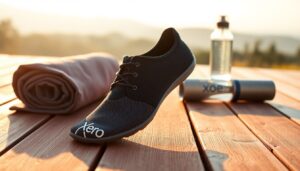
Top Recommendations for Yoga Enthusiasts in Search of Barefoot Shoes
Not all barefoot shoes are suitable for yoga and meditation. It is crucial to select a pair that strikes a balance between flexibility and grounding, allowing your feet to move naturally while ensuring stability. Look for models featuring thin soles for superior proprioception and a wide toe box to facilitate proper alignment—much like a yoga mat for your feet, offering the necessary support while keeping you connected to the ground.
Lightweight Z-Trail EV Sandals Perfect for Hot Yoga Sessions
Complementing your mat, the Z-Trail EV Sandals provide exceptional breathability and a lightweight feel, making them ideal for hot yoga or outdoor practices. Featuring adjustable straps, they ensure a secure fit, while the zero-drop design promotes correct posture. However, be cautious, as their open style may not offer adequate warmth for cooler studios.
Versatile Prio Neo Shoes for Varied Yoga Practices
Highly favored among many yogis, the Prio Neo combines durability with a barely-there sensation. Its grippy sole helps prevent slips during dynamic flows, and the adaptable upper accommodates your foot’s movements. It is perfect for both studio sessions and mindful walks.
Users praise the Prio Neo for its versatility, though some mention that the slightly thicker sole may diminish ground feedback compared to more minimalist options. If you prioritize protection over ultra-thin sensitivity, this model excels—just remember to break them in gradually to avoid stiffness.
Elevating Your Meditation Practice with the Right Barefoot Shoes
Barefoot shoes serve as a yoga mat for your feet, enabling a direct connection with the earth that enriches your meditation practice. This tactile feedback supports you in maintaining presence, effortlessly aligning your body and mind. The minimalist design encourages natural movement, allowing you to delve inward without distractions, making each meditation session more immersive and grounding.
Grounding Effects for Enhanced Stability During Meditation
Meditation demands stability, and barefoot shoes enhance this by amplifying sensory input through your soles. Feeling the surface beneath you anchors your awareness, significantly minimizing mental distractions. This physical connection mirrors the mental calmness you aim to achieve, creating a harmonious balance between your body and environment.
Improving Mindfulness and Focus Through Enhanced Sensory Engagement
To boost your focus, barefoot shoes eliminate barriers between you and the ground, enhancing proprioception. This awareness of your body’s position in space sharpens mindfulness, allowing you to detect subtle shifts in posture or breath. The outcome? A more profound, intentional meditation experience.
Grounding through barefoot shoes also reduces distractions caused by rigid soles or awkward foot positioning. When your feet are free, your mind can follow suit, facilitating a natural settling into the present moment. This synergy between body and mind fosters a meditative state more effortlessly.
Promoting Proper Posture and Spinal Alignment
Wearing barefoot shoes encourages proper weight distribution across your feet, which naturally aligns your spine. This alignment alleviates strain on your lower back and hips, allowing for comfortable seating or standing during extended sessions. The result is a taller, more relaxed posture that supports deeper breathing.
Central to this benefit is the elimination of heel elevation, commonly found in conventional shoes that can tilt your pelvis forward. Barefoot shoes endorse a neutral stance, preventing slouching and promoting natural spinal alignment. This alignment not only enhances meditation but also helps avoid long-term discomfort.
The Science Behind Grounding Techniques
When you step into barefoot shoes, your feet connect directly with the ground, enhancing sensory input and activating neural pathways associated with balance and awareness. This grounding effect, rooted in biomechanics, mirrors the experience of walking barefoot, stimulating proprioceptors and improving posture. Research indicates that this connection can alleviate stress by lowering cortisol levels, making it particularly beneficial for yoga and meditation. Picture it as a yoga mat for your feet—supportive yet intricately linked to the earth beneath you.
Scientific Research on Sensory Feedback Mechanisms
Studies show that barefoot shoes enhance tactile feedback, increasing your body’s awareness during movement. A 2018 study found that participants wearing minimalist footwear exhibited improved gait efficiency and greater sensitivity to various surfaces. This aligns perfectly with yoga’s focus on mindfulness, helping you tune into subtle shifts in weight and pressure to foster a deeper connection between mind and body.
Understanding the Impact on Proprioception and Balance
Sensory input from barefoot shoes heightens proprioception—your body’s ability to sense its position in space. This capability is crucial for yoga poses that demand precision, such as Tree or Warrior III. By strengthening foot muscles and enhancing balance, you cultivate stability both on and off the mat.
For example, a 2020 study indicated that users of minimalist footwear showed 19% better balance after 12 weeks compared to individuals wearing traditional shoes. This reinforces how grounding practices can transform your yoga experience, reducing the risk of injury and enhancing fluidity.
Grounding Techniques for Effective Stress Reduction
Amidst modern life’s chaos, grounding through barefoot shoes provides a sanctuary. Direct contact with the earth can lower stress hormones, fostering tranquility during meditation. The tactile feedback acts as an anchor, drawing you into the present moment—essential for mindfulness.
Research shows that grounding techniques, such as earthing or minimalist footwear, can reduce inflammation and enhance sleep quality. One study reported a 30% decrease in cortisol levels among participants who practiced grounding daily. For yogis, this translates to a calmer mind and a more resilient nervous system.
Personal Experiences of Practitioners Utilizing Barefoot Shoes in Yoga
Practitioners who have incorporated barefoot shoes into their yoga routines consistently report a deeper connection to their practice. The thin, flexible soles serve as a yoga mat for your feet, enhancing proprioception and grounding. Many find they can better align their posture and detect subtle balance shifts, making poses like Tree or Warrior feel more instinctive. Over time, your feet naturally strengthen, decreasing reliance on artificial supports and nurturing a more mindful practice.
Insights from Yoga Instructors Regarding Barefoot Shoes
Instructors who have adopted barefoot shoes have noticed improved stability in balancing poses. One teacher remarked that students appeared more present during meditation, as the shoes removed distractions caused by stiff soles. The natural movement of the feet also alleviated strain during longer sessions, proving advantageous for both teaching and personal practice.
Enhancing Balance and Minimizing Fatigue with Barefoot Shoes
An immediate benefit of barefoot shoes is the heightened awareness of your foot placement, which sharpens balance. Their lightweight design reduces fatigue, enabling you to hold poses longer without discomfort. As your arches and toes strengthen, strain during standing sequences diminishes.
Yoga practitioners often underestimate how conventional footwear can weaken foot muscles. With barefoot shoes, you reactivate these muscles, leading to better alignment and endurance. This transition can prevent injuries caused by overcompensation in the ankles or knees, making your practice safer and more sustainable.
Transitioning Smoothly from Conventional Footwear to Barefoot Shoes
It’s essential to understand that switching too quickly to barefoot shoes can lead to muscle soreness or discomfort. Start with brief sessions to allow your feet to acclimate. Focus on gentle poses before advancing to more challenging flows, giving your body time to adapt to the newfound freedom of movement.
Personal experiences emphasize the importance of patience. While some individuals may notice immediate benefits, others might require weeks to fully adjust. Pay close attention to your body; if you feel pain, take a step back. The transition can reward you with stronger feet and a deeper mind-body connection, but rushing the process may lead to injury.
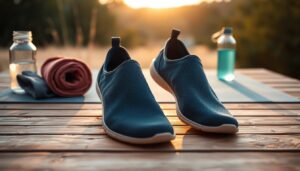
Selecting the Perfect Barefoot Shoe Tailored to Your Needs
When on the hunt for the ideal barefoot shoes, prioritize flexibility, ground feel, and minimal cushioning. Your shoes should emulate the natural movement of your feet, acting as a yoga mat for your feet—supportive yet connected to the ground. Highlight a wide toe box to allow your toes to spread organically, improving balance and stability during poses. Lightweight materials combined with a zero-drop sole will ensure proper alignment, helping you remain grounded in both yoga and meditation.
Customizing Your Shoe Selection Based on Your Practice Environment
Consider the environment in which you practice to tailor your shoe selection accordingly. For indoor studios, thin-soled options maximize sensory feedback, whereas outdoor sessions may require slightly more durable soles to navigate uneven terrain. If you practice on hardwood or tiled floors, sufficient grip is essential to prevent slipping during transitions.
Assessing Comfort and Fit for Optimal Performance
Assessing comfort starts with trying on shoes and moving as you typically would in practice. Your toes should have enough space to spread, and the shoe should feel like a second skin—snug but not constrictive. Avoid any footwear that pinches or rubs, as discomfort can disrupt your focus.
A well-fitted barefoot shoe will enhance your posture and minimize strain. Proper fit encourages natural foot mechanics, helping to prevent long-term issues like bunions or plantar fasciitis. Test the shoes with dynamic movements to ensure they remain secure without constriction.
Choosing the Right Materials and Design for Barefoot Shoes
The choice of material greatly affects breathability and flexibility in barefoot shoes. Opt for natural fibers like organic cotton or hemp, which wick moisture and adapt to your foot’s shape. Synthetic blends may offer durability but can trap heat, compromising comfort during extended sessions.
The design is also crucial for performance. A seamless interior reduces irritation, while a flexible sole allows for unrestricted movement. Avoid stiff or overly structured designs, as they counteract the benefits of barefoot footwear. Choose shoes that enhance, rather than hinder, your connection to the earth.
Debunking Common Myths Surrounding Barefoot Shoes
Numerous misconceptions about barefoot shoes often prevent individuals from trying them. Some assume they are exclusively for athletes or that they lack sufficient protection; however, these shoes are designed to enhance natural movement while providing minimal interference. Consider them as a yoga mat for your feet—supportive yet connected to the ground. Disproving these myths empowers you to make informed choices for your practice.
Are Barefoot Shoes Suitable for Everyone?
Myths may suggest that barefoot shoes are appropriate for all, but individual needs can vary significantly. If you have serious foot conditions or rely on orthotics, it’s advisable to consult a specialist before making the switch. Nonetheless, many people find barefoot shoes beneficial for improving posture and balance, especially in yoga and meditation.
The Misconception Regarding Lack of Support in Barefoot Shoes
Although they promote grounding, barefoot shoes do not lack support—they simply redefine what support means. Rather than providing rigid arches, they encourage your feet to strengthen naturally, similar to how yoga cultivates core stability. The thin sole protects your feet while allowing you to feel the earth beneath you.
Due to their design, these shoes promote proper alignment and muscle engagement. Over time, this can reduce reliance on artificial support, but transitioning too quickly may cause strain on unprepared feet. It is crucial to listen to your body and progress at a comfortable rate.
Acknowledging the Need for Adjustment Time When Transitioning
When transitioning to barefoot shoes, your feet need time to acclimate. Initial discomfort is common as muscles and tendons adjust to newfound freedom. Start with short sessions during yoga or leisurely walks to prevent overexertion.
Patience is essential. Rushing the process can lead to injuries, while gradual use can naturally strengthen muscles. Always consult a specialist if you encounter chronic pain. Barefoot shoes, like yoga, thrive on mindful progression.
Effectively Maintaining and Caring for Your Barefoot Shoes
Unlike traditional footwear, barefoot shoes require minimal yet thoughtful upkeep to maintain their flexibility and connection to the ground. Treat them as a yoga mat for your feet—supportive yet intimately linked to the earth. Regular care ensures they remain comfortable and functional, enhancing your practice.
Practical Cleaning and Storage Techniques for Longevity
After a session or while at home, gently brush off dirt with a soft cloth and use mild soap for deeper cleaning. Avoid harsh detergents or machine washing, as these can compromise the natural materials. Air-dry your shoes away from direct heat and store them in a cool, dry place. This straightforward routine keeps your shoes fresh and ready for your next practice.
- Brush off loose dirt
- Hand wash with mild soap
- Air-dry naturally
Ensuring Longevity and Durability of Your Barefoot Shoes
Storage plays a critical role in the lifespan of your barefoot shoes. Keep them in a well-ventilated space to prevent moisture buildup, which can weaken the materials. If possible, rotate between pairs to minimize wear and tear.
Additionally, regularly inspect the soles and uppers for signs of thinning or damage. Proper care will help your shoes maintain their grounded feel, supporting your practice for years to come.
Recognizing When to Replace Your Barefoot Shoes
Barefoot shoes become ineffective once the soles are excessively worn or the structure is deformed. If you notice reduced grip or discomfort during poses, it’s time to invest in a new pair. Worn-out shoes can compromise your alignment and connection to the ground.
In general, replacing them every 6-12 months with regular use ensures optimal support. Neglecting wear can lead to strain or injury, so it’s essential to heed both your body and your footwear.
Incorporating Barefoot Shoes into Your Daily Routine
Having experienced the grounding benefits of barefoot shoes during yoga and meditation, consider integrating them into your everyday life. Begin by wearing them for short walks or errands, allowing your feet to adjust gradually. Over time, your muscles and posture will strengthen, enhancing your connection to the earth. Visualize them as a yoga mat for your feet—supportive yet connected to the ground, assisting you in maintaining mindfulness even off the mat.
Gradually Transitioning to a Barefoot Lifestyle
Shifting from cushioned shoes to barefoot footwear requires patience. Start with 30-minute sessions, gradually increasing wear time to avoid strain. Be vigilant about your body; discomfort signals adjustment rather than failure. This transition reawakens your foot’s natural mechanics, fostering balance and resilience.
Exploring Activities Beyond Yoga and Meditation with Barefoot Shoes
Do you enjoy hiking, running, or gardening? Barefoot shoes excel in various environments. Their flexible soles and spacious toe boxes support natural movement, minimizing injury risk while keeping you grounded. Whether on trails or city streets, they seamlessly combine barefoot freedom with essential protection.
Even daily chores can serve as opportunities to strengthen your feet. Walking in a barefoot style indoors or during light workouts enhances proprioception, sharpening your awareness of body alignment. Over time, you may notice improved agility and reduced reliance on artificial support.
Promoting Overall Foot Health with Barefoot Shoes
Transitioning to barefoot shoes can alleviate common foot issues such as plantar fasciitis or bunions by encouraging proper toe splay and arch engagement. Unlike traditional shoes, they do not compress or weaken your feet, promoting long-term mobility.
Barefoot footwear also stimulates nerve endings, enhancing circulation and sensory feedback. This is not merely about comfort; it serves as a preventive strategy against chronic pain. However, consult a specialist if you have existing conditions to ensure a safe transition.
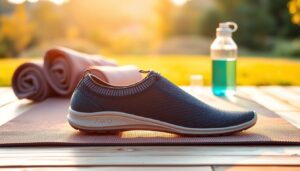
Expert Insights on the Effectiveness of Barefoot Shoes
Despite varying opinions, a consensus among specialists indicates that barefoot shoes can significantly enhance your yoga and meditation practice by promoting natural movement and grounding. Research suggests they may improve proprioception, allowing for a deeper connection with the earth—akin to a yoga mat for your feet. However, abrupt transitions can strain your muscles, making gradual adaptation essential.
Insights from Experienced Yoga Professionals on Barefoot Shoes
Barefoot shoes are often lauded among yoga instructors for their minimalist design, allowing for freedom of movement while maintaining stability. Many instructors observe that these shoes foster enhanced alignment and balance, although some advise caution against depending on them if you are new to barefoot practices.
Feedback from Foot Health Specialists Regarding Barefoot Shoes
Podiatrists suggest that barefoot shoes can strengthen foot muscles and enhance arch support over time. However, they also caution that improper use may lead to injuries such as plantar fasciitis, particularly for those with pre-existing conditions.
Expert recommendations emphasize the importance of starting with short sessions and selecting shoes with flexible soles to mimic natural foot movements. Combining barefoot shoes with foot exercises can maximize benefits while minimizing risks.
Comments from Meditation Practitioners Regarding Barefoot Shoes
Many yoga and meditation enthusiasts regard barefoot shoes as tools to deepen their mindfulness practice. The direct contact with the ground fosters a sense of presence, although some practitioners prefer an entirely barefoot experience for maximum sensory feedback.
Specialists stress that while barefoot shoes can enrich your practice, listening to your body is crucial. If discomfort arises, temporarily reverting to traditional footwear may be advisable. The ultimate aim is to find balance—supporting your feet while maintaining connection.
Answering Common Questions About Barefoot Shoes
After delving into barefoot shoes for yoga and meditation, you may have lingering inquiries. Many practitioners seek clarity on transition periods, alignment benefits, or how these shoes enhance mindfulness. Barefoot shoes function as a yoga mat for your feet, providing support while keeping you grounded. Whether you are a beginner or an experienced practitioner, understanding these nuances can enhance your experience.
Differentiating Barefoot Shoes from Traditional Yoga Footwear
The distinctions between barefoot shoes and traditional yoga footwear are clear. Here’s a quick comparison:
| | | High, mimics natural foot movement | Often restrictive, with thicker soles | Enhances sensory connection | Reduces tactile feedback | Strengthens foot muscles | Provides artificial arch support
Helpful Tips for Beginners Transitioning to Barefoot Shoes
To ease into wearing barefoot shoes, take it slow. Focus on short sessions, ensure a proper fit, and prioritize listening to your body. Gradual adaptation is key to avoiding discomfort.
Beginners often overlook the significance of foot strength. Here are some beneficial exercises:
- Strengthen arches through toe spreads and lifts
- Walk on varied surfaces to build resilience
- Monitor your progress to avoid overuse
Patience can lead to significantly improved outcomes.
Addressing Concerns Regarding Foot Health with Barefoot Shoes
A common worry revolves around whether barefoot shoes could harm your feet. Research indicates they enhance posture and reduce joint strain when used appropriately. However, pre-existing conditions like plantar fasciitis may require additional care.
Another important factor is safe transitioning. Rushing can lead to injury, while gradual use naturally strengthens muscles. Always consult a specialist if you experience chronic pain. Barefoot shoes, like yoga, thrive on mindful progression.
Key Considerations When Selecting Barefoot Shoes
Remember that barefoot shoes should closely resemble the natural shape of your foot, featuring a wide toe box and a flexible sole. Seek breathable materials like organic cotton or recycled synthetics to enhance comfort during yoga and meditation. Prioritize brands that align with your values, whether related to sustainability, durability, or minimalist design. Testing the fit is crucial—your toes should have room to splay, and the sole should feel like a yoga mat for your feet, supportive yet connected to the ground.
Where to Find Quality Barefoot Shoes
Top venues for shopping for barefoot shoes include specialty footwear shops, eco-friendly boutiques, and online retailers. Brands such as Vivobarefoot, Xero Shoes, and Merrell offer dedicated collections tailored to mindful movement. If you prefer trying shoes on before buying, check local stores that specialize in minimalist footwear. For a broader selection, online marketplaces like Amazon or brand websites often provide detailed sizing guides and customer reviews to help you make an informed decision.
Comparing Online and In-Store Shopping Experiences for Barefoot Shoes
Every purchasing decision involves balancing convenience against tactile experience. Online shopping typically offers a wider variety and often better prices, but you miss the opportunity to feel the shoes firsthand. In-store purchases enable you to assess fit and flexibility immediately, ensuring the shoes meet your yoga and meditation needs. Consider these factors based on your priorities—speed, variety, or immediate feedback.
For those familiar with a brand, online shopping can be ideal, especially if you rely on detailed sizing charts. However, if you are new to barefoot shoes, visiting a store can help avoid costly mistakes. Some retailers offer free returns, bridging the gap between online and in-store options. Always review return policies before making an online purchase to prevent unexpected surprises.
Balancing Cost and Budgeting When Buying Barefoot Shoes
When investing in barefoot shoes, aim for a balance between quality and affordability. Prices can range from $50 for budget-friendly options to over $200 for premium, sustainably-made products. Establish a budget that reflects your commitment to grounding practices—consider it an investment in long-term foot health rather than mere footwear. Look for seasonal discounts and sales to acquire high-quality pairs without overspending.
Your spending priorities are significant. Premium brands often incorporate eco-friendly materials and superior craftsmanship, justifying a higher price point. However, mid-range options can still deliver excellent comfort and durability. Avoid the cheapest options if they compromise on flexibility or toe space, as poorly fitting shoes can hinder your practice and potentially lead to discomfort over time.
Continuing Your Journey with Barefoot Shoes
In summary, barefoot shoes can profoundly enhance your yoga and meditation practice by cultivating a deeper connection to the earth, serving as a yoga mat for your feet—supportive yet firmly grounded. These minimalist footwear options improve proprioception, balance, and alignment, aiding you in remaining present in your movements and breathwork. By embracing barefoot shoes, you honor the natural biomechanics of your feet, rooting your practice in both physical and mindful awareness. Whether on the mat or during meditation, this subtle shift can amplify your sense of stability and harmony, aligning body and mind with every step.

Frequently Asked Questions About Barefoot Shoes
In what ways do barefoot shoes enhance yoga and meditation experiences?
Barefoot shoes serve as a yoga mat for your feet—supportive yet firmly connected to the ground. They facilitate natural foot movement, thereby improving balance and proprioception during poses. Their thin, flexible soles allow you to feel the floor beneath you, deepening your mind-body connection and grounding your practice.
Are barefoot shoes suitable for all types of yoga?
Yes, barefoot shoes are compatible with most yoga styles, ranging from gentle Hatha to dynamic Vinyasa. Their lightweight design and flexible soles replicate the advantages of practicing barefoot while providing essential protection. For hot yoga, opt for breathable materials like merino wool or mesh to ensure comfort and hygiene.
What should I focus on when selecting barefoot shoes for meditation?
Seek a wide toe box to allow your toes to spread naturally, akin to roots grounding into the earth. Choose zero-drop soles to maintain proper posture during seated meditation. Soft, flexible materials enhance tactile feedback, allowing you to remain present—consider them an extension of your mindful awareness.
The Article Barefoot Shoes for Yoga and Meditation: Grounding Your Practice appeared first on My Shoes Finder
The Article Barefoot Shoes for an Improved Yoga and Meditation Experience First Appeared ON
: https://ad4sc.com
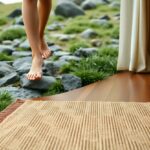

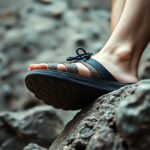

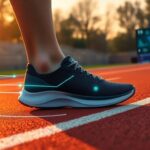




No responses yet